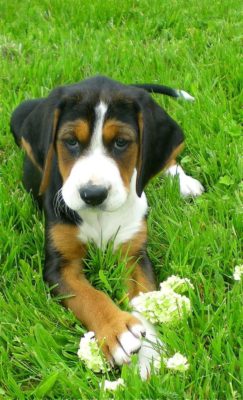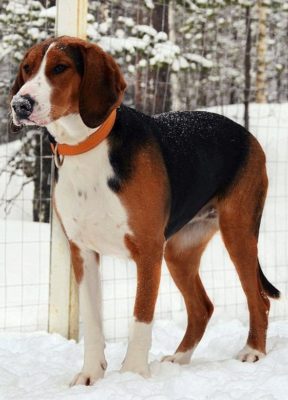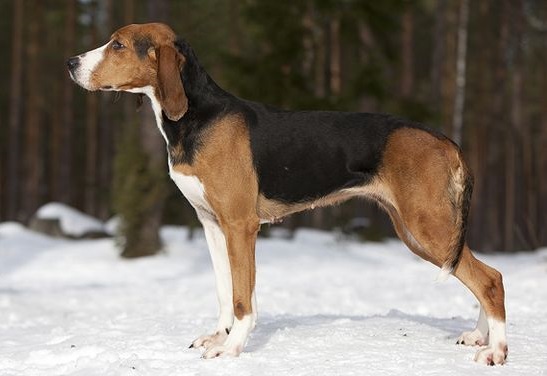Finnish Hound
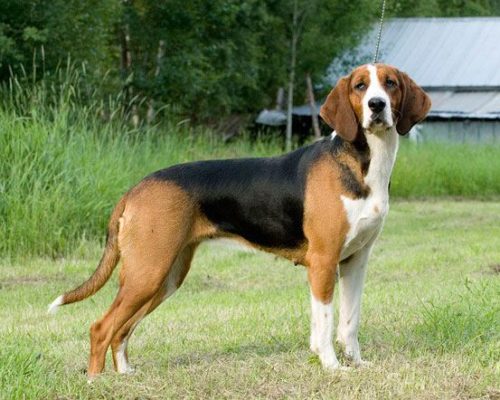
The Finnish Hound has all the qualities of a true companion. This dog is malleable, always friendly, and very loyal. Although, during the hunt, it turns on in a moment and becomes a great hunter. However, it is worth remembering that this balance in character can only be achieved through long training and persistent training.
Table of Contents
Breed Information
| Another Name | Suomenajokoira, Finnish Bracke |
| Origin | Finland |
| Height | Males 55-61 cm Females 52-58 cm |
| Weight | 20-35 kg |
| Fur | Tight, well-fitting, with undercoat |
| Color | Tri-color. Dark red background with black chapper and white markings |
| Lifespan | 11-13 years |
| FCI Classification | Scent hounds and related breeds |
| Group | Hunting dogs |
| Price | $400 |
Breed Photos
Origin History
The Finnish Hound was bred in Finland by Tammelin, the jeweler by crossing Scandinavian, German, and Swiss hounds. The breeder paid little attention to the dog’s exterior, but after some time, the Finnish club approved the tricolor color. Even though the breed is small, it has gained popularity in many countries. This dog combines excellent hunting characteristics with a companionable character.
Unfortunately, there is one drawback with the Finnish Hound. It can only hunt in the summer, but this is not a huge problem these days. If hunting used to be a daily occupation, and someone lived off it, now the Hound can become a great pet even in the absence of this occupation. True, in such a case you should not forget about long walks.
Appearance
The Finnish Hound has an elongated torso, straight back, and taut body. The head is rectangular, and the muzzle is long. The teeth are large and tightly clenched. The ears are omitted on the sides. The Hound was bred for a long and loud hunt, so it has a large lung volume and a deep chest.
Although there is a slight difference in size, usually females do not differ in temperament during the hunt but, in general, even superior to males. The limbs are well developed, the hind usually more muscular than the front. The trail narrows to the base. The wool adheres closely to the body, and there is practically no undercoat. The most common color is tricolor.
Character
Finnish Hound has all the qualities of a true companion. This dog is malleable, always friendly, and very loyal. Although, during the hunt, it turns on in a moment and becomes a great hunter. However, it is worth remembering that this balance in character can only be achieved through long training and persistent training.
With its family and owner, the Finnish Hound shows the full range of emotions, but with strangers is almost always indifferent and cold. Due to its vigilance to others, this Hound can be an excellent hunter.
This breed is great with children. During playtime, an adult dog can allow them much more without being aggressive at all. But if the dog is still young, it is better to keep an eye on the play. If children came into the family after the dog, you should not forget to pay attention to it. Otherwise, the pet may begin to feel jealous.
Unfortunately, the Finnish Hound does not get along well with other pets and sees them as potential prey. Therefore, if there are other pets in the house, it is better to get another dog breed. Even during the hunt, the Hound is perfectly able to work by itself, accompanying the prey with a ringing bark.
Care
Care will not be the key factor in keeping a Finnish Hound. It is an unpretentious dog; it is enough to follow elementary rules. Of course, the Hound should be bathed immediately if the dog returned dirty after a walk or hunting. Special attention should be paid to the ears and observe their hygiene. This breed is prone to otitis. Claws need to be trimmed often because the dog does not always have the opportunity to sharpen them.
Training
The Finnish Hound needs persistent training. It is important not to miss the moment from childhood to show the dog who is the boss in the family. There is only one leader for her, whom she will obey in everything.
On the walk, by exploring the area, the dog must learn basic rules. The owner must teach the dog not to show hunting instinct towards stray animals and other dogs. During a walk, the Finnish Hound should not walk in front of the owner because this will be the first sign of dominance. Only through proper motivation and rewards will the dog be able to learn what his master teaches him.
At seven months of age, with proper training, the Hound can go out hunting with other dogs. The dog should not be allowed to show aggression towards the owner during hunting excitement.
Common Diseases
The Finnish Hound can hunt only in the summer, so you need to protect it from hypothermia during the cold season. The weak point is the ears because they are tight to the head, and after exertion, the temperature rises, which contributes to the emergence of infection. The owner must constantly monitor the ears so that the resulting disease does not take a more acute form.
The Finnish Hound is prone to:
- otitis media;
- hip dysplasia – puppies, should undergo an initial screening for predisposition;
- conjunctivitis.
Nutrition
A healthy dog should have a good appetite. The diet should consist of meat, which can be given together with porridge or liquid soup. Fruit, vegetables, and herbs can be given for a change. You should not overfeed the dog; it is better to provide portions at fixed times.
The pet should always have access to freshwater. It is better to take it with you on long walks.
 Chien Français Blanc et Noir
Chien Français Blanc et Noir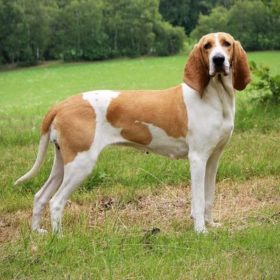 Schweizer Laufhund
Schweizer Laufhund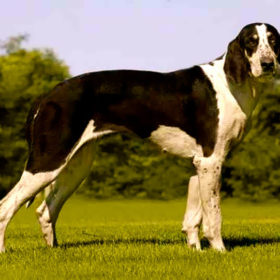 Grand Anglo-Français Blanc et Noir
Grand Anglo-Français Blanc et Noir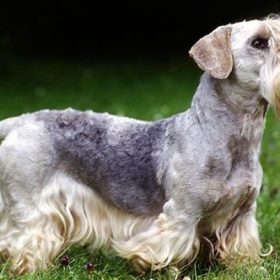 Cesky Terrier
Cesky Terrier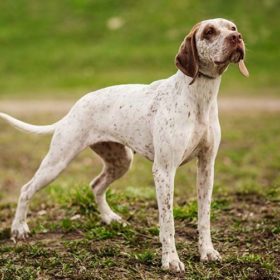 Braque du Bourbonnais
Braque du Bourbonnais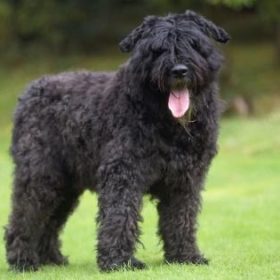 Bouvier des Flandres
Bouvier des Flandres